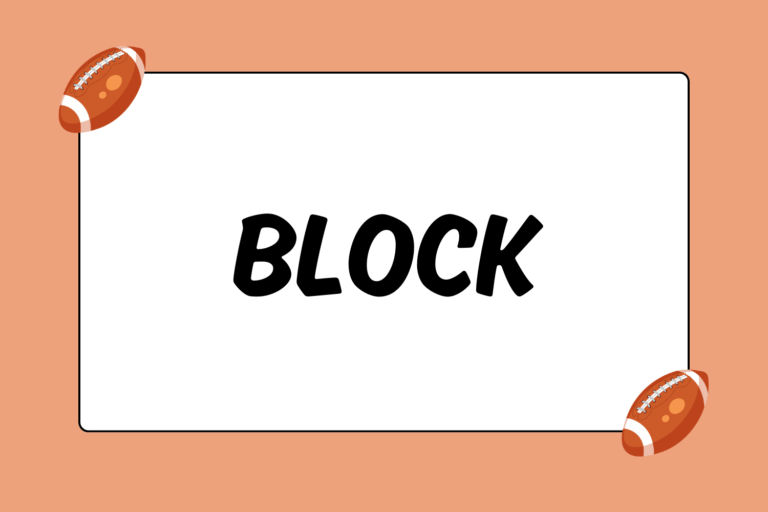In a football game, the vast majority of the focus and scrutiny players face relates to how they perform when a play is actually underway. This is also true of both the coaching staff and the fans watching the game. But for the players, several key performance factors have to be addressed before the ball is even hiked.
One such factor is the stance used by a player; different positions have different responsibilities, and depending on what those responsibilities are, a player’s stance can give him an edge over an opposing player that stands in the way. The three most common football stances in use today are the 2-point stance, the 3-point stance, and the 4-point stance. This guide provides an overview of the technique and benefits of each, as well as the players most likely to use each of the three stances.
Hot Tip: Know the Lingo
The word ‘point’ in each of the stance types refers to an instance of the body coming into contact with the ground. The number of ‘points’ in the stances directly relates to the benefits each can provide.
The 2-point Stance
Getting into a 2-point stance is relatively easy; it only requires that a player be standing on both feet. Though the actual stance will vary between players and positions, the only requirement of a 2-point stance is that both of a player’s feet be simultaneously touching the ground.
Advantages of the 2-point Stance
Unlike the other stances, players in a 2-point stance remain relatively upright. This offers the immediate benefit of being able to see a wider range of the field, side-to-side as well as downfield. Other advantages of the 2-point stance vary depending on the position in which it’s used:
Benefits to Receivers, Running Backs, Linebackers & Defensive Backs
Players at these positions almost always line up in a 2-point stance. This is because there is a similar characteristic in each of their responsibilities, namely they’re all required to be able to move in any direction from the snap. Staying upright allows them to do so.
Also, none of these players frequently has to deal with consistent contact right from the snap (at least compared to the linemen). Though receivers and defensive backs frequently jostle each other at the onset of a play, what’s more important to both types of players is the ability to quickly maneuver to any part of the field.
Benefits to Linemen
Although it’s rare to see linemen in a 2-point stance, occasionally you will see some O-linemen (almost always the tackles) use it on a passing play. In these instances, an O-linemen would opt for a 2-point stance for the same reason almost every time: the ability to quickly drop into pass protection. Usually offenses don’t want to make it that easy for the defense to guess what type of play is coming next, but occasionally an offense will sacrifice that element of surprise in favor of being able to quickly form the pass protection pocket. Compared to a 3-point stance (the only other stance that an O-linemen is likely to use), it’s easier to stay upright and block a defender from a 2-point stance than it is to have to come up from a lower one.
The 3-point Stance
Favored by linemen on both sides of the ball, the 3-point stance arranges players in a significantly lower manner than the 2-point stance. Players in this stance bend at the knees and lean forward, placing one hand on the ground for balance and support.
Advantages of the 3-point Stance
Though it does make it hard to see much of the field, the 3-point stance better prepares players to quickly enter into a sustained contact situation right from the start of the play. That’s also why it’s almost exclusively used by linemen, although occasionally a running back will start in a 3-point stance.
Benefits to Offensive & Defensive Linemen
The primary advantage provided by the 3-point stance is that it forces a player’s center of gravity lower, and makes it easier to maintain balance; both are extremely useful when another player is attempting to push you over. However, there is one unique difference between how the 3-point stance benefits the two types of linemen: it offers offensive linemen a slight advantage over their defensive counterparts.
For D-linemen, the job is almost always to get into the backfield quickly enough to disrupt the play, or to at least make it difficult for the O-line to keep them out and allow the LBs to make a play. They do not, however, know which type of play is coming. O-linemen, on the other hand, do know whether the next play will be a run or a pass, and can block for both types of plays from a 3-point stance.
Benefits to Tight Ends & Running Backs
Because tight ends line up immediately adjacent to the O-tackles, they will frequently do so in a 3-point stance. This helps them prepare to block a defensive player, or if they’re heading off into a passing route, gives defenders the illusion that they’re ready to block instead.
As for running backs, most often they’ll line up in a 2-point stance, as this makes it easier for their first move to occur in any direction; it’s fairly difficult to quickly go in any direction but forward from a 3-point stance. As such, it is commonly utilized on dive plays, or when there are two or more running backs in the back field and one of them is acting as the lead blocker through the hole.
The 4-point Stance
Used exclusively by defensive linemen, the 4-point stance has both hands and both feet in contact with the ground, spreading a player’s body weight evenly over the hands and feet. This position allows players to launch forward especially quickly, and helps many D-ends take advantage of their speed over O-linemen, who are almost always bigger but not as fast.
Unlike O-linemen, whose responsibilities for a particular play depend on the formation and position of the defensive players across from them, D-linemen almost always simply want to find the path of least resistance into the offensive backfield. Be it by helping a D-end accelerate quickly and beat an O-tackle to the outside, or by keeping a D-tackle’s center of gravity low and making it easier to scrape by an interior O-linemen, the 4-point stance does offer a unique set of advantages, albeit fairly limited in terms of whom it can benefit.
The Task Decides the Stance
Not every stance will work for every player. For example, a wide receiver who lines up in a 4-point stance will launch straight ahead quickly, but it will also make it much more difficult to quickly change direction; for this reason, you never see wide receivers beginning a play in this way. Choosing the right stance depends on what position you play, as well as the type of play the offense runs on a given snap.





